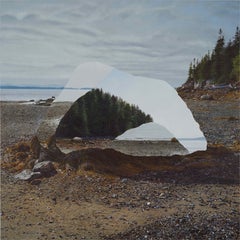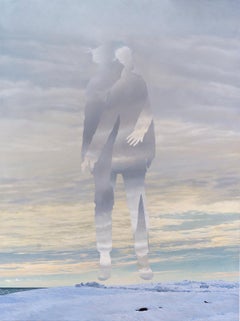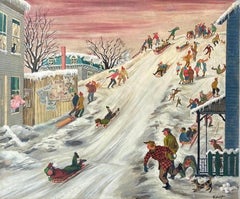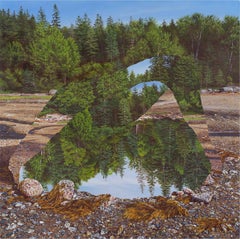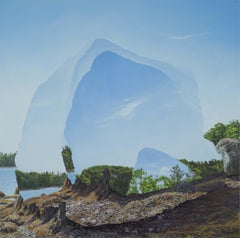Tempera Landscape Paintings
2010s Contemporary Tempera Landscape Paintings
Panel, Egg Tempera
2010s Contemporary Tempera Landscape Paintings
Egg Tempera, Panel
1940s Academic Tempera Landscape Paintings
Tempera
1940s American Realist Tempera Landscape Paintings
Egg Tempera, Masonite
2010s Contemporary Tempera Landscape Paintings
Panel, Egg Tempera
2010s Contemporary Tempera Landscape Paintings
Egg Tempera, Panel
2010s Contemporary Tempera Landscape Paintings
Egg Tempera, Panel
2010s Contemporary Tempera Landscape Paintings
Panel, Egg Tempera
1980s American Impressionist Tempera Landscape Paintings
Oil, Egg Tempera, Board
1940s Abstract Expressionist Tempera Landscape Paintings
Paper, Oil, Tempera
1960s Modern Tempera Landscape Paintings
Egg Tempera
1970s Impressionist Tempera Landscape Paintings
Casein
2010s American Impressionist Tempera Landscape Paintings
Casein, Panel
2010s American Impressionist Tempera Landscape Paintings
Casein, Panel
Mid-20th Century American Modern Tempera Landscape Paintings
Panel, Tempera
1960s Contemporary Tempera Landscape Paintings
Masonite, Tempera
2010s American Impressionist Tempera Landscape Paintings
Egg Tempera
1930s American Realist Tempera Landscape Paintings
Tempera
Mid-20th Century American Modern Tempera Landscape Paintings
Board, Tempera
1950s Modern Tempera Landscape Paintings
Tempera, Masonite
2010s Realist Tempera Landscape Paintings
Oil, Egg Tempera
Early 2000s Tempera Landscape Paintings
Casein
1940s Abstract Expressionist Tempera Landscape Paintings
Casein
1940s American Modern Tempera Landscape Paintings
Tempera, Board
Early 2000s Abstract Expressionist Tempera Landscape Paintings
Paper, Tempera
Mid-20th Century American Modern Tempera Landscape Paintings
Tempera, Masonite
2010s Surrealist Tempera Landscape Paintings
Oil, Egg Tempera
Late 20th Century American Realist Tempera Landscape Paintings
Paper, Casein
2010s American Impressionist Tempera Landscape Paintings
Panel, Casein
1970s American Modern Tempera Landscape Paintings
Mixed Media, Paper, Oil, Tempera
1960s Post-Impressionist Tempera Landscape Paintings
Casein
Mid-20th Century American Modern Tempera Landscape Paintings
Tempera, Wood Panel
1930s American Impressionist Tempera Landscape Paintings
Egg Tempera, Board
2010s American Impressionist Tempera Landscape Paintings
Panel, Casein
2010s Contemporary Tempera Landscape Paintings
Wood Panel, Egg Tempera
20th Century American Modern Tempera Landscape Paintings
Tempera
1910s American Modern Tempera Landscape Paintings
Tempera
1950s Modern Tempera Landscape Paintings
Casein
1930s American Realist Tempera Landscape Paintings
Tempera, Oil, Canvas
Mid-20th Century American Impressionist Tempera Landscape Paintings
Tempera, Board
1980s Contemporary Tempera Landscape Paintings
Masonite, Egg Tempera, Plaster
1960s Abstract Expressionist Tempera Landscape Paintings
Mixed Media, Tempera
Mid-20th Century Abstract Impressionist Tempera Landscape Paintings
Tempera, Masonite
1980s Contemporary Tempera Landscape Paintings
Egg Tempera
2010s Contemporary Tempera Landscape Paintings
Gold Leaf
Mid-20th Century American Modern Tempera Landscape Paintings
Casein, Tempera, Board
1980s Contemporary Tempera Landscape Paintings
Masonite, Egg Tempera
1960s Post-Impressionist Tempera Landscape Paintings
Casein, Gesso, Wood Panel
Mid-20th Century American Modern Tempera Landscape Paintings
Casein
1980s Modern Tempera Landscape Paintings
Egg Tempera, Silk
1980s American Modern Tempera Landscape Paintings
Casein, Archival Paper
1930s American Impressionist Tempera Landscape Paintings
Tempera, Masonite
1960s Naturalistic Tempera Landscape Paintings
Egg Tempera
2010s American Realist Tempera Landscape Paintings
Egg Tempera
1940s American Impressionist Tempera Landscape Paintings
Masonite, Tempera
21st Century and Contemporary Photorealist Tempera Landscape Paintings
Canvas, Egg Tempera
21st Century and Contemporary Realist Tempera Landscape Paintings
Egg Tempera, Board
Mid-20th Century Impressionist Tempera Landscape Paintings
Panel, Casein
